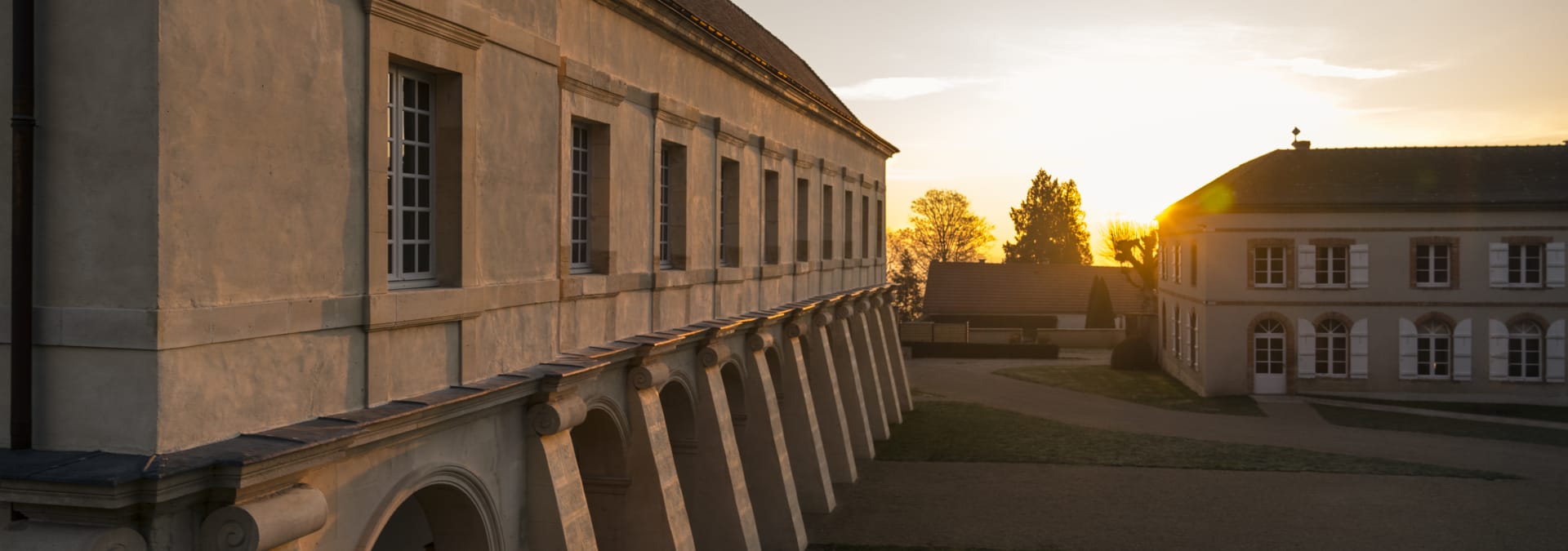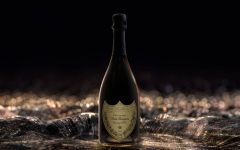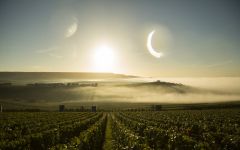Dom Perignon Rose Limited Edition Metamorphosis in Gift Box 2003
-
Tasting
Panel -
Wine
Spectator -
Robert
Parker


Product Details
Your Rating
Somm Note
Winemaker Notes
The 2003 vintage is one of superlatives: a year like no other, defined by extremes. The vineyard was first touched by severe spring frosts and then by an unparalleled heat wave. The vintage of a perfectly ripe and healthy small harvest, is thus the most precocious since 1822.
This special limited edition release showcases fashion designer Iris Van Herpen's concept of metamorphosis as embodied by Dom Pérignon. The über premium bottle and presentation box is inspired by fossils and features striking organic structures in its design. Celebrating the evolution and transformation of Dom Pérignon 2003 as it mutates and changes over time in the bottle, this release arguably represents the most ambitious Champagne/fashion collaboration to date. Highly collectable (and here for a short time only) Dom Pérignon "Metamorphosis" displays all of the hallmark power, opulence and intensity that marks the 2003 harvest as being one of the most attractive of recent times.
Professional Ratings
-
Tasting Panel
Exquisite rose-colored wine with a nose of cherry and soft citrus; it is creamy textured and precise with flavors that are at once complex and rich yet delicate and pure; focused and elegant with subtlety and depth; graceful, balanced and astonishingly beautiful.
-
Wine Spectator
Finely detailed in texture, with an expressive flavor profile of strawberry pâte de fruit, biscotti, ground anise and ginger, matched to vivid acidity and a rich, minerally character. Broad and creamy on the palate, featuring a long, echoing finish. Drink now through 2029.
-
Robert Parker's Wine Advocate
What’s more, the price-quality rapport here is excellent by any Champagne standards, and puts that of many a prestige cuvee to shame. Moet’s 2003 Brut Rose Dom Perignon exhibits both richness and robustness reflecting its torrid vintage, yet manages to stint neither on primary juiciness nor transparency to nuance; nor does it come off as at all heavy. Lightly cooked ripe strawberry and fig infused with rose hip, licorice, Ceylon tea, heliotrope and leather inform a delightfully forward nose and lush, effusively fruity palate. A tart and seedy edge to the strawberry serves for invigoration; and lobster shell reduction serves for mouthwatering salinity and somehow downright sweet animal savor. There is a hint of tannin, but it is fine-grained and suggestive of structural support. A long, seductively rich finish manages to harbor not just the immediately aforementioned virtues, but also a sense of transparency to floral and tea-like nuances and to virtually shimmering stoniness. This alluring and distinctive beauty should be worth following for at least the next half dozen years.










Dom Pérignon: an absolute commitment to Vintage
Dom Pérignon's commitment to vintage is absolute. Each Dom Pérignon is a true act of creation, made from only the best grapes. The champagne's intensity is based in precision, so inviting, so mysterious. Each Vintage has three Plénitudes, and embodies the total faith in the creation that is constantly renewed by Chef de Cave Vincent Chaperon. Coupled with a bold sense of playfulness, Dom Pérignon inspires the greatest creators in the world.Made only from the best grapes grown in one single year, each Dom Perignon's Vintage represents a harmonic balance between the nature of the year and the signature of Dom Pérignon. After no fewer than 8 years of elaboration, each vintage emerges complete, seamless and tactile. Dom Pérignon Champagne is made through an assemblage of Pinot Noir and Chardonnay, created by using only the best grapes harvested from the 17 Grands Crus in Champagne and the Premier Cru of Hautvillers.

What are the different types of sparkling rosé wine?
Rosé sparkling wines like Champagne, Prosecco, Cava, and others make a fun and festive alternative to regular bubbles—but don’t snub these as not as important as their clear counterparts. Rosé Champagnes (i.e., those coming from the Champagne region of France) are made in the same basic way as regular Champagne, from the same grapes and the same region. Most other regions where sparkling wine is produced, and where red grape varieties also grow, also make a rosé version.
How is sparkling rosé wine made?
There are two main methods to make rosé sparkling wine. Typically, either white wine is blended with red wine to make a rosé base wine, or only red grapes are used but spend a short period of time on their skins (maceration) to make rosé colored juice before pressing and fermentation. In either case the base wine goes through a second fermentation (the one that makes the bubbles) through any of the various sparkling wine making methods.
What gives rosé Champagne and sparkling wine their color and bubbles?
The bubbles in sparkling wine are formed when the base wine undergoes a secondary fermentation, which traps carbon dioxide inside the bottle or fermentation vessel. During this stage, the yeast cells can absorb some of the wine’s color but for the most part, the pink hue remains.
How do you serve rosé sparkling wine?
Treat rosé sparkling wine as you would treat any Champagne, Prosecco, Cava, and other sparkling wine of comparable quality. For storing in any long-term sense, these should be kept at cellar temperature, about 55F. For serving, cool to about 40F to 50F. As for drinking, the best glasses have a stem and a flute or tulip shape to allow the bead (bubbles) and beautiful rosé hue to show.
How long do rosé Champagne and sparkling wine last?
Most rosé versions of Prosecco, Champagne, Cava or others around the “$20 and under” price point are intended for early consumption. Those made using the traditional method with extended cellar time before release (e.g., Champagne or Crémant) can typically improve with age. If you are unsure, definitely consult a wine professional for guidance.

Associated with luxury, celebration, and romance, the region, Champagne, is home to the world’s most prized sparkling wine. In order to bear the label, ‘Champagne’, a sparkling wine must originate from this northeastern region of France—called Champagne—and adhere to strict quality standards. Made up of the three towns Reims, Épernay, and Aÿ, it was here that the traditional method of sparkling wine production was both invented and perfected, birthing a winemaking technique as well as a flavor profile that is now emulated worldwide.
Well-drained, limestone and chalky soil defines much of the region, which lend a mineral component to its wines. Champagne’s cold, continental climate promotes ample acidity in its grapes but weather differences from year to year can create significant variation between vintages. While vintage Champagnes are produced in exceptional years, non-vintage cuvées are produced annually from a blend of several years in order to produce Champagnes that maintain a consistent house style.
With nearly negligible exceptions, . These can be blended together or bottled as individual varietal Champagnes, depending on the final style of wine desired. Chardonnay, the only white variety, contributes freshness, elegance, lively acidity and notes of citrus, orchard fruit and white flowers. Pinot Noir and its relative Pinot Meunier, provide the backbone to many blends, adding structure, body and supple red fruit flavors. Wines with a large proportion of Pinot Meunier will be ready to drink earlier, while Pinot Noir contributes to longevity. Whether it is white or rosé, most Champagne is made from a blend of red and white grapes—and uniquely, rosé is often produce by blending together red and white wine. A Champagne made exclusively from Chardonnay will be labeled as ‘blanc de blancs,’ while ones comprised of only red grapes are called ‘blanc de noirs.’
